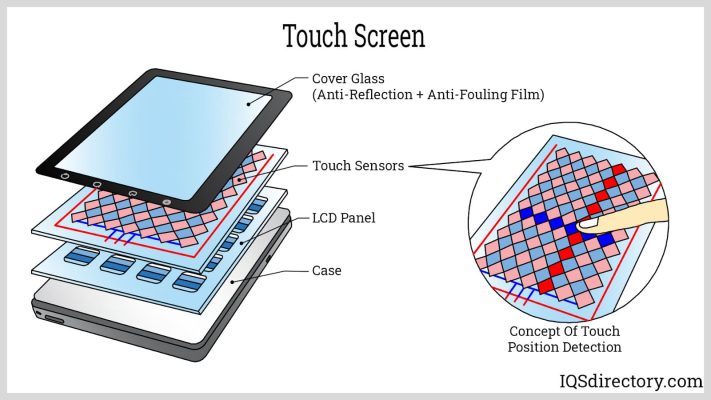Touchscreen News
Why Smartphones Use Capacitive Touch-Sensing Technology
While there are always exceptions, most smartphones produced and sold today use capacitive touch-sensing technology. We’ve talked about this before, but it’s worth mentioning again that capacitive is a type of touch-sensing technology in which a device identifies touch commands by measuring change in capacitance. You see, touching the surface of a capacitive device causes a change in capacitance, which the device identifies to determine when and where the user touched. So, why do smartphone manufacturers prefer capacitive touch-sensing technology over resistive or other options?
Higher Level of Sensitivity
One of the reasons why so many smartphones use capacitive touch-sensing technology is because it offers a higher level of sensitivity than resistive touch-sensing technology. Resistive touchscreen devices identify touch based on pressure, meaning you have to press down hard enough to trigger a touch command. In comparison, however, capacitive touchscreen devices identify touch based on capacitance, so even minimal pressure is enough to trigger a touch command.
Image Quality
Another key benefit to using capacitive touch-sensing technology over resistive for use in smartphones is image quality. It’s no secret that consumers prefer crystal-clear, high-resolution images on their smartphones — and capacitive is the perfect match for this reason. They offer an exceptional level of image quality that’s unmatched when compared to resistive. This doesn’t necessarily mean that all resistive touchscreen devices produce a poor/low-quality image. Rather, capacitive touchscreen devices are usually just a little better. And because image quality is such a key factor for consumers, many manufacturers choose capacitive touch-sensing technology for their smartphones.
Responsive
A third reason why smartphones typically use capacitive touch-sensing technology is because they are responsive, more so than resistive devices. Response time is defined as the length of time between a touch-based command and when the device responds. Conventional wisdom should lead you to believe that shorter response times are preferred. If a device has a long response time, it lowers the overall performance and quality of the device.
Hopefully, this gives you a better understanding of capacitive touch-sensing technology and why it’s the preferred choice for smartphones. To recap, most smartphone manufacturers choose capacitive touch-sensing technology because it offers a higher level of sensitivity, better image quality, and it’s more responsive. To learn more about touchscreen technology, check out some of our previous blog posts here at En-Touch.

